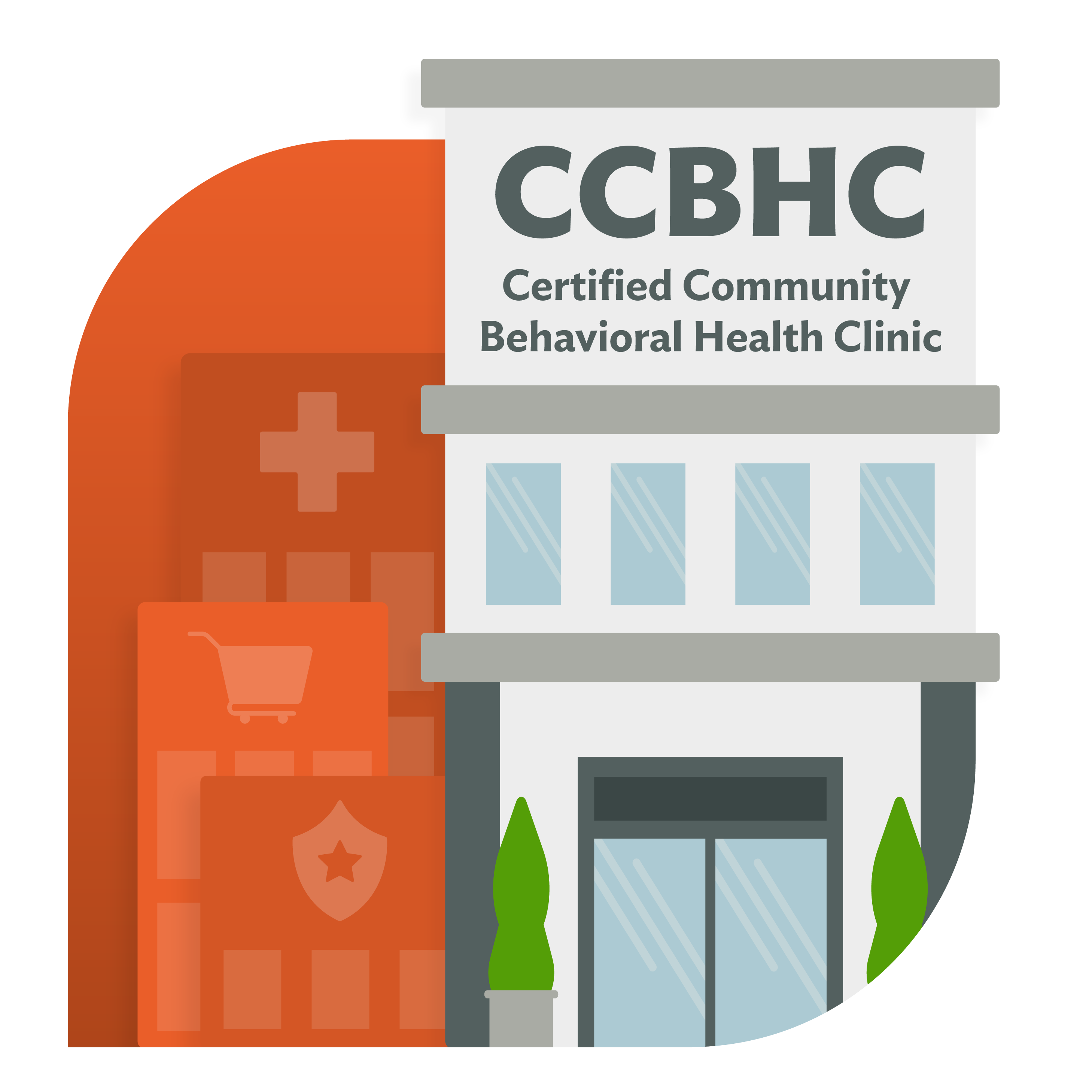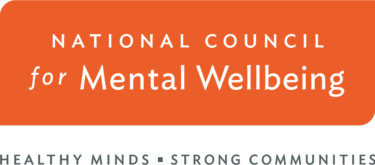Learn how states can use the CCBHC model to streamline mobile crisis response and other mental health and substance use services, including 988.
DownloadCCBHCs and Crisis Response Systems

The ideal crisis response system provides communities with a continuum of services that address increasing intensity of needs and connect individuals to care beyond the moment of crisis. CCBHCs’ required services span this continuum, making them an essential component of a crisis response system.
This vision of a nationwide behavioral health crisis system is critical to improving the wellbeing of our nation and ensuring everyone can thrive.
Required CCBHC Crisis Services
Prevention
-
- Early engagement in care
- Crisis prevention planning
- Outreach and support outside the clinic
Crisis Response
- 24/7 mobile teams
- Crisis stabilization
- Suicide prevention
- Ambulatory withdrawal management
- Coordination with law enforcement and hospitals
Post-crisis Care
- Discharge/release planning, support and coordination
- Comprehensive outpatient MH and SUD care
Many CCBHCs are going above and beyond these requirements with additional high-impact services and partnerships.
CCBHCs and 988

988 is the new, easy to remember three-digit dialing code connecting people to the 988 Suicide & Crisis Lifeline (formerly known as the National Suicide Prevention Lifeline), where support from trained crisis counselors is available 24/7 nationwide for anyone experiencing a mental health or substance use crisis or any other emotional distress.
The implementation of 988 offers states an opportunity — and an imperative — to bolster high-quality community crisis response systems that are seeing large surges in lifeline usage in the first months of 988. Through their standardized crisis response capabilities, their broad range of required crisis care, and their role in serving all individuals regardless of location or ability to pay, CCBHCs are uniquely positioned to serve as a cornerstone in our nation’s new crisis response system, decreasing the burden on 911 operators, law enforcement officials, and emergency departments.
Three Roles for CCBHCs in 988 Implementation
CCBHCs as 988 Call Centers
- 10% of CCBHCs report they are 988 Suicide & Crisis Lifeline call centers, and 80% have established partnerships with 988 call centers.
CCBHCs as Immediate Care Providers
- CCBHCs can serve as partners to 988 call centers for direct services the call centers don’t directly provide (mobile crisis response, crisis stabilization, etc.).
- 29% of CCBHCs were able to add mobile crisis response and 16% added crisis stabilization services as a result of certification, expanding and strengthening the crisis continuum in their communities.
CCBHCs as Referral Partners
- For post-crisis and/or non-urgent needs, CCBHCs can serve as referral partners to 988 call centers and other crisis responders.
- CCBHCs serve all clients regardless of ability to pay.
- 65% of CCBHCs see patients within one week or less, while 81% reported seeing patients for routine needs within 10 days of the initial call or referral.
Learn more about CCBHCs’ role in 988 implementation.
CCBHCs and Rising Demand for Crisis Services
By December 2022, Lifeline volume (calls, texts, chats) was up 43% compared to a year prior. As states and providers grapple with how to ensure sufficient workforce capacity amid a nationwide workforce shortage, the CCBHC model holds promise.
In areas where other organizations are delivering some or all elements of the ideal crisis response system, CCBHCs can play an important role in filling any gaps and in serving as a referral source for 988 call centers so that individuals are connected to a source of ongoing treatment designed to prevent future crises.
988 and Funding with the CCBHC Model
When implemented with a prospective payment system in Medicaid, CCBHCs’ flexible funding offers flexibility in adapting to increased demand while improving clinics’ ability to recruit and retain qualified staff.
Acting Needed to Expand and Sustain CCBHCs
Through the Bipartisan Safer Communities Act, states now have the opportunity to apply to join the CCBHC demonstration.
- States can implement the CCBHC model through Medicaid without waiting for Congressional action. Contact us to connect to efforts in your state or learn how to get started.
- Current CCBHCs can sign up today to participate in the 988 Suicide & Crisis Lifeline.
“Our crisis team is doing some innovative stuff right now to be more like an Uber-type experience where you can request a crisis response and be able to track it — from [when the request was made], to when [you’ve] been assigned a provider, to how far away they are. It’s more user friendly from the customer experience, especially when you’re in crisis. The smoother the better.”
Pacific Clinics (California)
“We have more than 20 care coordination agreements in place, which has led to greater than 50% diversion rate from jail when mobile response happens.”
Seasons Center (Iowa)
“Since becoming a CCBHC we’ve been able to get many mobile devices, iPads, into the communities. Law enforcement officers are able to reach out to us seven days a week, 24 hours a day. Through these partnerships, we have been able to save law enforcement officers in Northern Oklahoma 275 days of continuous driving — the equivalent of 15 trips around the world — because we can identify the best, most appropriate level of care.”
Josh Cantwell, Chief Clinical Officer of Special Programs, Grand Lake Mental Health Center (Oklahoma)
